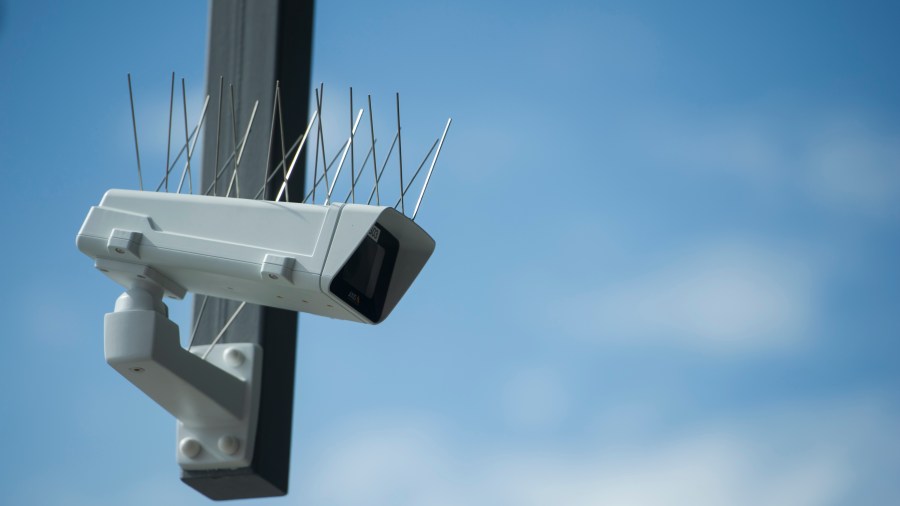Is there a way to use facial recognition that isn’t a dystopian nightmare?

This week, we’re talking with Marketplace reporters about what tech topics they’re watching on their beats as we look ahead to 2020. One issue we can expect to see in the news a lot is facial recognition.
In 2019, San Francisco banned police and public agencies from using facial recognition over civil rights fears. But facial recognition tech has become widespread in China, where it’s used for daily surveillance and to track and detain the minority Muslim population there, the Uighurs.
Marketplace’s Scott Tong was based in China for years and is now in our Washington, D.C. bureau. He’s been tracking facial recognition tech in China, and in the U.S. That includes popping his own photo to a facial recognition system–which translated into a lot of data. Here’s just a small part of it:
{ “landmark”: {
“mouth_upper_lip_left_contour2”: {
“y”: 390,
“x”: 316
},
“mouth_upper_lip_top”: {
“y”: 388,
“x”: 345
I asked Scott if China represents a worst-case example of how this technology can be misused. The following is an edited transcript of our conversation.
Scott Tong: China can be a pretty opaque place. This is what we know about how this technology is being used in western China. The province of Xinjiang, where most of the Uighurs live, is connected to a centralized database, so it’s used to trap people, it’s used as a digital tether. If you go say, 300 yards away from where you’re going, the technology knows that, this facial recognition technology knows that. It sure seems like this technology could be used in these camps to make sure people don’t go very far away from where they’re supposed to be.

Molly Wood: That is, as we said, that is the nightmare scenario. It’s also a scenario that people, a lot of people immediately go to. San Francisco has already essentially said, “No way can you deploy this technology on the streets of an American city.” But clearly there are uses for this that don’t involve us living in an Orwellian nightmare, right? What are the most promising uses of this technology that don’t involve a civil rights violation?
Tong: Right. Law enforcement says this can be used to find missing people, missing children — if you have them in a database, and people are walking by, it can find those people. The police in the state of Maryland use this to identify a shooter. There was a shooting at a mall in Nairobi several years ago attributed to this extremist group, and now this mall has this technology, and proponents say that the incidence of crime has gone way down. So yes, public security and governments, I think, are at the center of this technology story, but as proponents, it surely can be used in a lot of ways that help society.
Wood: To your knowledge, is there regulation around the use in the U.S. other than the San Francisco law?
Tong: At a national level, I don’t think there is, because we do know that Microsoft and other companies have come to Washington and said “we need to pass some rules, we need to put some guardrails on this facial recognition technology.” I think there are some jurisdictions, cities that are making their own decisions over whether they’re going to use it. It’s always the technology [that] seems to be racing ahead faster than the conversation about the ethics and the conversation about the rules.
The future of this podcast starts with you.
Every day, the “Marketplace Tech” team demystifies the digital economy with stories that explore more than just Big Tech. We’re committed to covering topics that matter to you and the world around us, diving deep into how technology intersects with climate change, inequity, and disinformation.
As part of a nonprofit newsroom, we’re counting on listeners like you to keep this public service paywall-free and available to all.
Support “Marketplace Tech” in any amount today and become a partner in our mission.


















